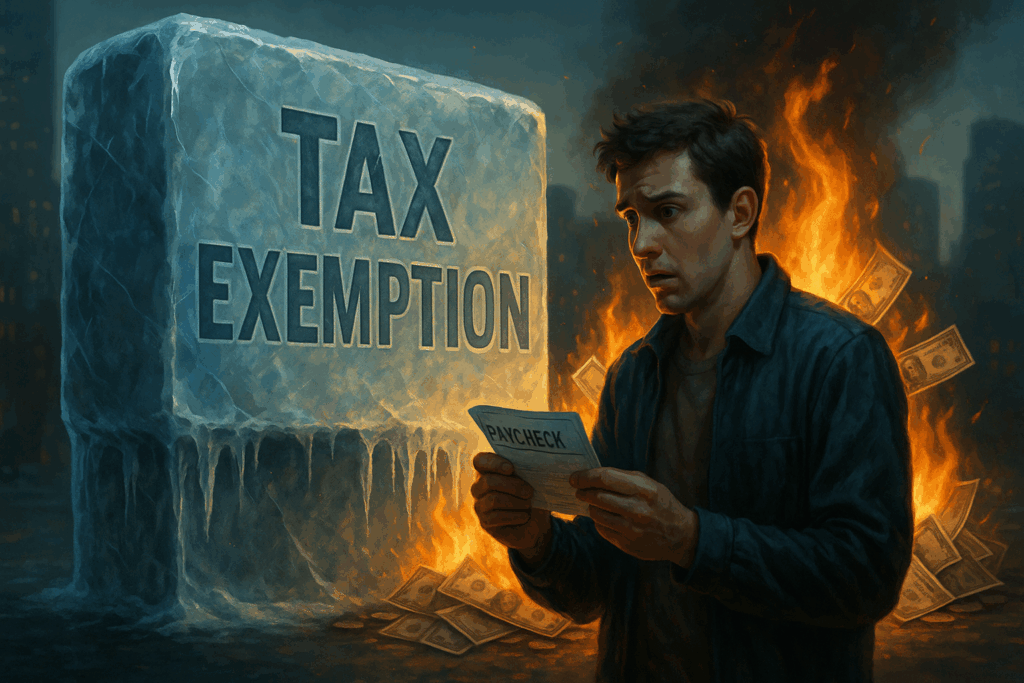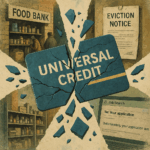Imagine working harder every year, getting small raises, managing your budget, and doing everything right—only to find yourself with less money in your pocket. Not because you’re spending more. Not because you’ve become careless. But because the tax system has silently shifted under your feet. That’s the reality for millions who are falling victim to a quiet, slow-moving phenomenon: the freezing of tax exemption thresholds. While the world watches inflation numbers and interest rates, few realize that stagnant tax brackets are playing an equally damaging role in eroding financial stability, particularly for the middle class.
This fiscal freeze might not make headlines, but it has massive implications. When governments leave tax thresholds unchanged as inflation rises, people are pushed into higher tax brackets without any real increase in their purchasing power. This subtle tax creep—often referred to as “fiscal drag”—is essentially a stealth tax hike. It doesn’t require a vote, a debate, or a headline. Yet it’s siphoning more money from paychecks each year, punishing modest salary increases and making economic progress feel like an uphill battle. Understanding how this works isn’t just about economics—it’s about fairness, transparency, and the future of a functioning middle class.
How frozen tax thresholds silently raise your burden

At the core of this issue lies a simple truth: inflation increases income on paper, but not in practice. Wages go up nominally to help workers cope with the rising cost of goods and services. However, when tax brackets and exemptions remain fixed, those nominal increases push individuals into higher tax categories. They begin paying a higher percentage of their income to the government—despite having no real increase in disposable wealth. This situation results in a higher effective tax rate, even though the statutory rate has remained the same.
This phenomenon disproportionately impacts low- and middle-income earners. For them, even a small increase in income can trigger a tax liability that didn’t exist before. Suddenly, someone who once qualified for an exemption or lower bracket finds themselves paying hundreds—or even thousands—more in taxes. All of this happens without any new legislation or announcements. The tax code remains unchanged, yet its impact becomes more severe simply because the economy has evolved. What looks like a neutral fiscal decision is, in effect, a regressive measure.
Why governments prefer freezing to raising rates
It might seem illogical that policymakers would intentionally leave thresholds frozen during times of high inflation. After all, isn’t the role of a tax system to adjust with economic realities? In theory, yes. But in practice, freezing tax limits is a politically convenient strategy. Raising tax rates tends to generate public backlash and political risk. But letting inflation do the dirty work? That often flies under the radar.
Governments struggling with deficits and rising social spending see bracket creep as a low-resistance method to boost revenue. It doesn’t require a legislative vote, and it doesn’t create headlines. It’s essentially an automatic funding increase that doesn’t look like one. From a budgetary standpoint, it’s efficient. But for taxpayers, it feels like a betrayal of good faith. They’re contributing more without being told or asked—just slowly squeezed over time.
Some administrations even count on this effect to meet their fiscal targets. They bake it into revenue projections and quietly benefit from a populace that doesn’t fully understand what’s happening. But there’s a danger to this reliance. As more people become aware of the hidden tax hikes, trust in government erodes. Citizens begin to view tax systems as manipulative and unfair. Over time, this resentment can weaken democratic institutions and increase political polarization.
Freezing thresholds is also a short-sighted approach. While it might help fill budget gaps temporarily, it stifles economic growth by reducing consumer spending power. When people feel like they’re being penalized for earning more, they hold back. They delay big purchases, save less, and feel less optimistic about their financial future. In this way, bracket creep acts like a hidden brake on economic momentum.
The human cost: from silent stress to real sacrifices
The impact of frozen tax thresholds isn’t just economic—it’s deeply personal. For young professionals, the extra tax burden can mean putting off buying a car, moving into a better apartment, or paying off student loans. For families, it’s fewer resources for education, health care, and day-to-day stability. For the elderly, whose retirement income rarely keeps up with inflation, it’s a blow to dignity and independence.
Consider the case of a worker who receives a modest 5% raise just to keep pace with inflation. If that increase pushes them into a higher tax bracket, their net income might actually decrease once taxes are deducted. That creates an emotional disconnect: “I’m earning more, but I feel poorer.” It’s demoralizing and frustrating—especially when it happens year after year. The psychological toll can manifest in financial anxiety, a sense of helplessness, and even resentment toward the system.
For many, there’s also a growing awareness that the tax system isn’t just failing to protect them—it’s actively working against them. This perception undermines not just personal confidence, but social cohesion. When people believe the rules are rigged, they stop playing fair. Tax evasion increases. Compliance drops. Civic engagement erodes. A society that no longer trusts its tax system risks fracturing from within.
What’s more, the people most affected by frozen thresholds are often the least equipped to advocate for change. They don’t have lobbyists or accountants to help navigate the system. They just have bills, responsibilities, and the constant struggle to make ends meet. Ignoring their plight means allowing inequality to fester under the surface—until it eventually erupts.
The silent squeeze: when still policies move your money
The freezing of tax exemption limits might seem like a technical detail, but in practice, it’s a massive redistribution of financial responsibility from the wealthy and politically powerful to the everyday worker. It’s not transparent, not fair, and not sustainable. If left unchecked, it risks creating a society where effort is punished and stagnation is rewarded. To create a fairer tax system, thresholds must be indexed to inflation by default, not as an occasional political gesture.
Policymakers should prioritize transparency, so that citizens can understand how their taxes are being calculated—and why. Ultimately, tax systems should reflect real economic conditions, not outdated formulas that enrich governments at the expense of financial well-being. The next time you see your paycheck shrink or your tax bill grow, ask yourself: did the rules change—or did the system just freeze and let inflation do the rest?


